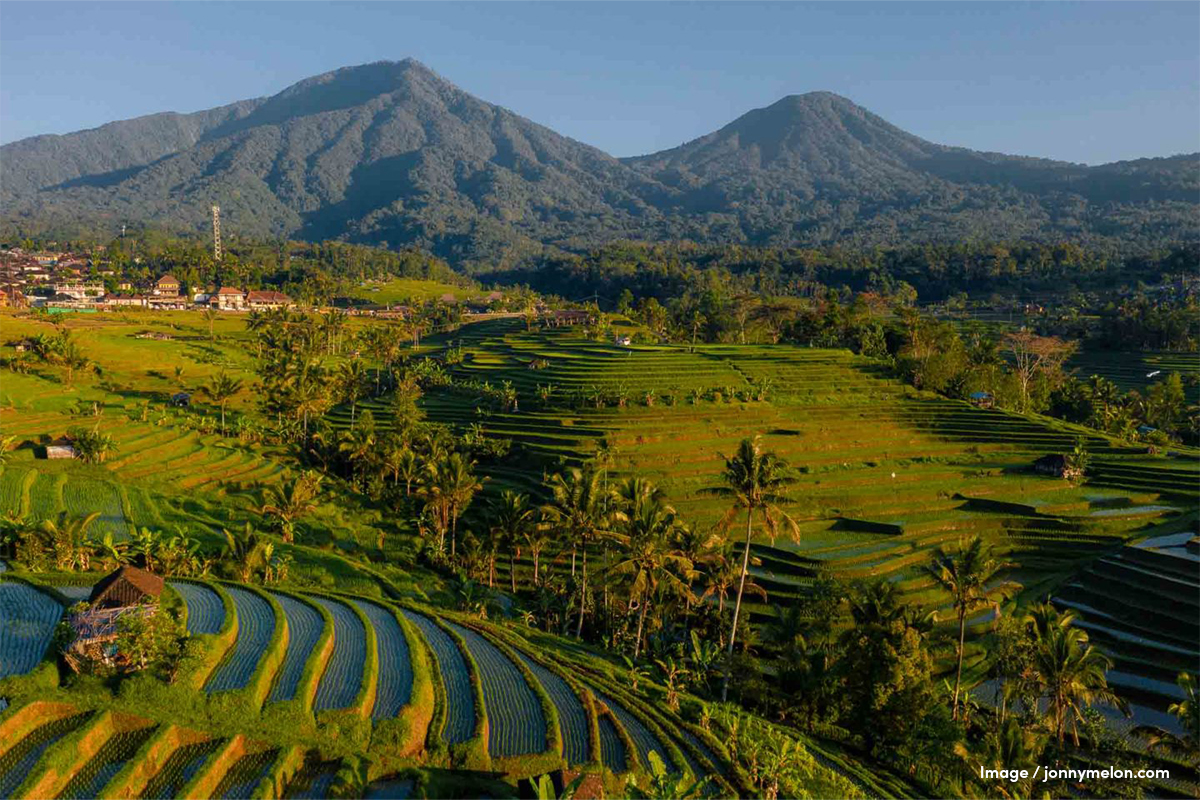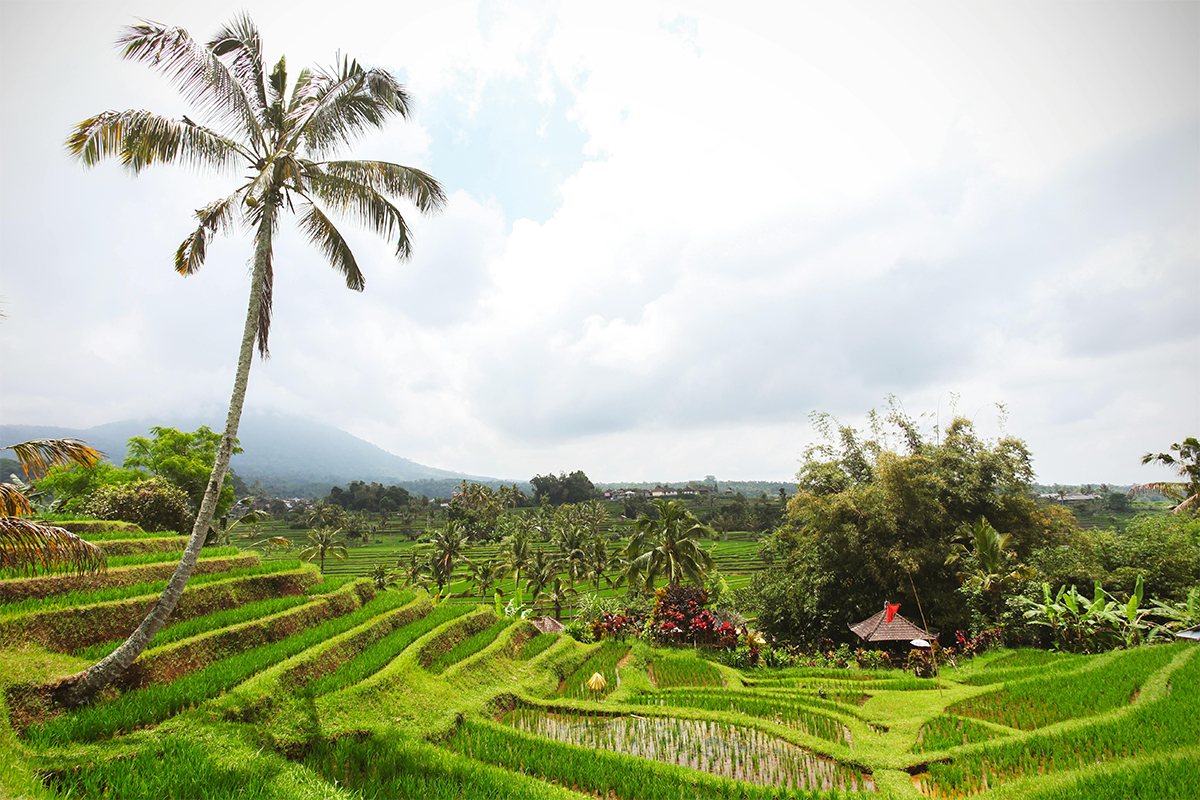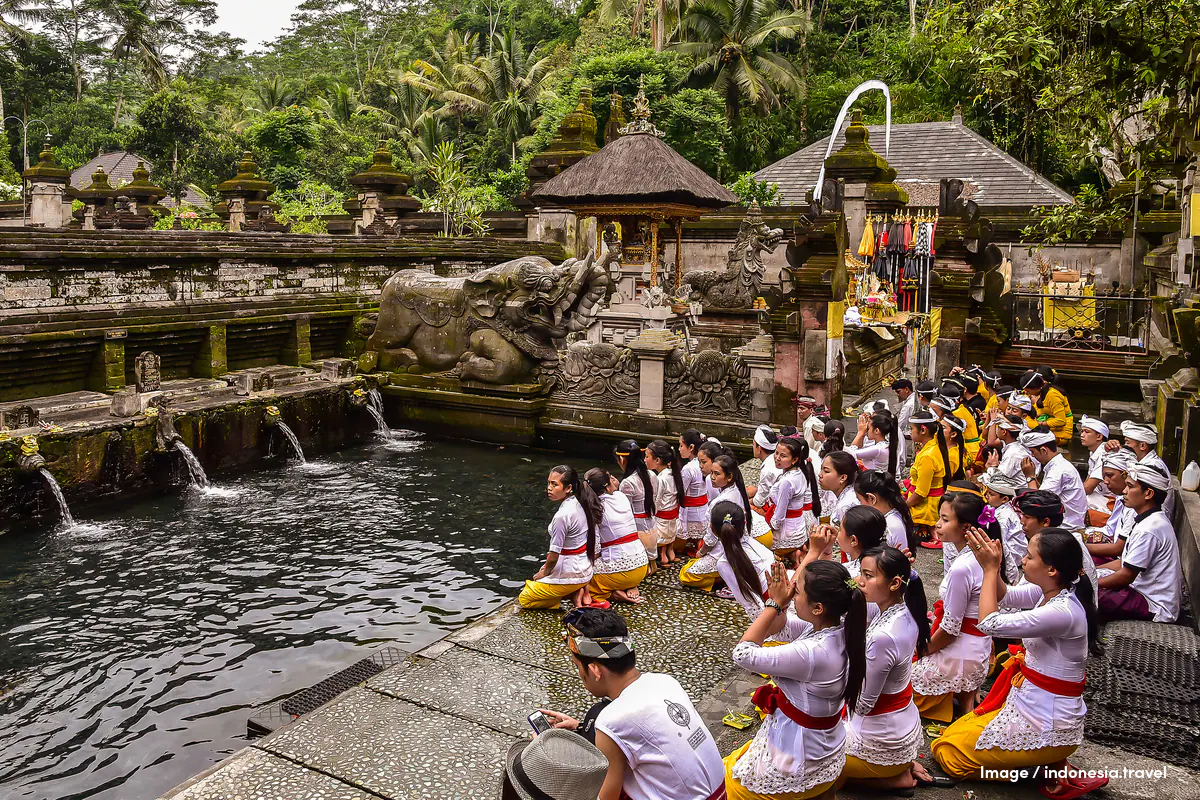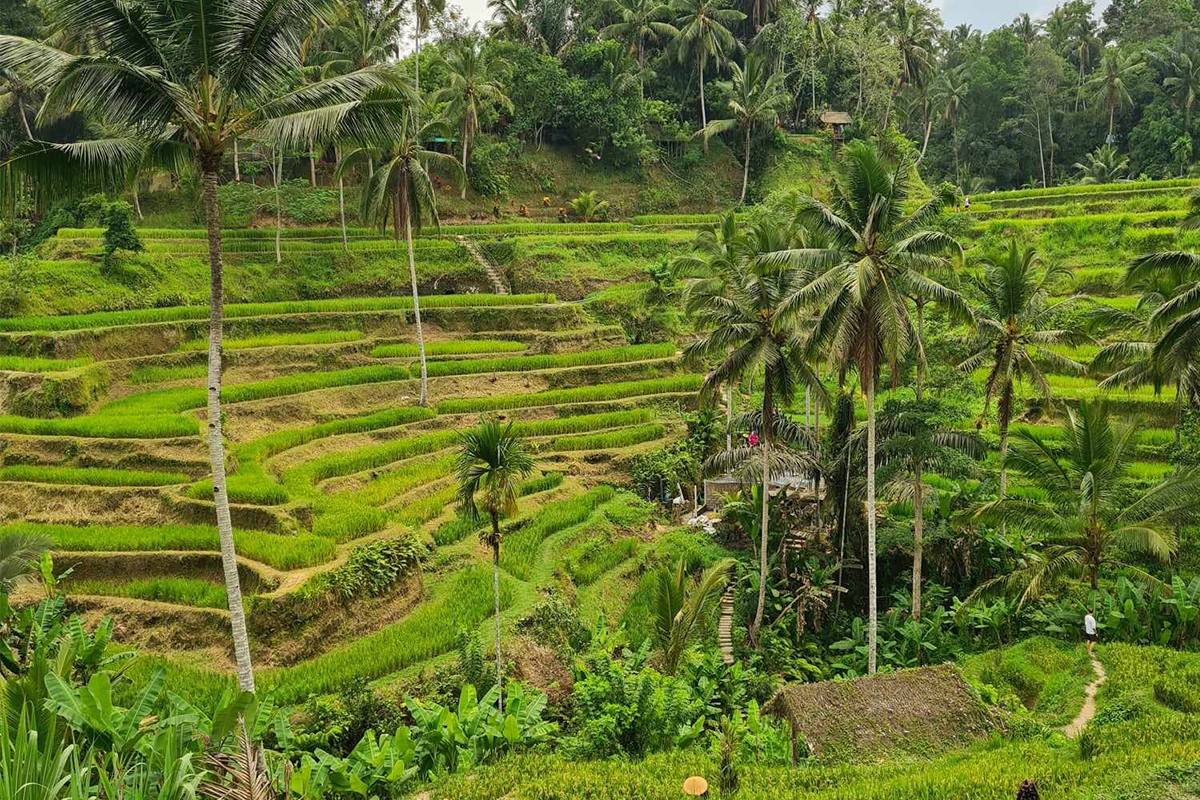History: Bali’s Agricultural Heritage
Rice cultivation has long formed an integral part of Indonesia’s history, stretching back to the eighth century. Viewed by the Balinese people as a gift from God and a symbol of life, it is Bali’s fertile soil and optimal levels of rainfall, which makes rice farming a productive operation year round and has done for millenia.
For thousands of years, an intricate system of water-irrigation combined with the religious belief of harmony between the human, spiritual and natural landscape, has allowed rice production to become a communal undertaking across Bali. This complex and ancient system is known as Subak, a social irrigation system that allows for the equal distribution of water for rice crops that originates from the same water source. This allows the entire community to benefit, rather than an individual farmer. Any water not used flows back to the main water source in a cyclical and sustainable manner.
The Subak network consists of interconnected weirs and canals where water flows from springs through Bali’s water temples, coordinating water use to each rice field. These water temples cover a land mass of 19,500 hectares, with the primary being Pura Ulun Danu Batur, located along the crater of Lake Batur, believed to serve the goddess of the water, Dewi Danu.
The entire Subak system is underpinned by the ancient Tri Hita Karana philosophy that aims to sustain a harmonious relationship with the human, natural and spiritual world through rituals, offerings and artistic performances. To this day, this philosophy is exemplified throughout rice producing communities and the democratic way in which they continue this practice.



